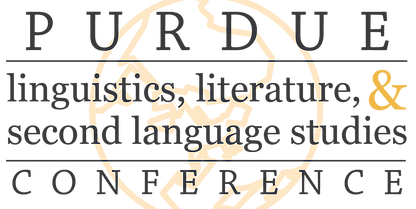Description
Emotions have always been a mysterious realm of human beings gaining an understanding of which requires the collaboration of scholars from multiple disciplines. This study employed the Appraisal Theory (Martin & White, 2005) of evaluations and emotions to explore the manifestation of emotions in a popular modern prose fiction, the first book of the twilight series by Stephenie Meyer (2009) - Twilight. The objective of the study was to gain a deep understanding of how a bestselling literary prose fiction, Twilight, employs human emotions, and thus “affect”, to impose its “effect” on the reader. I applied the affect sub-system of the attitude system to 10000 words of the novel Twilight. I used a discourse analytic method to analyze the text along with a quantitative method to tabulate the frequencies of each type of emotion. Results showed that Twilight tends to employ a negative language in expressing attitudinal evaluations of affect and is inclined to employ an indirect way of expressing emotions. In a total of 445 instances of affect that were found in Twilight, the feeling of “insecurity” comprised the majority (39%) and after that, the feelings of “happiness” and “dissatisfaction” had an equal share of 19%. This study is a step toward understanding how to apply Appraisal Theory to literary texts to understand the evaluative language that is used in such texts. Also, it sheds light on how emotional language contributes to the features of such genre - a vampire-themed suspense romance.
Start Date
9-29-2019 11:30 AM
Recommended Citation
Ataei, Susan, "Exploring the Emotional Language in the Twilight Novel as a Literary Discourse: An Appraisal Theory Analysis" (2019). Purdue Linguistics, Literature, and Second Language Studies Conference. 2.
https://docs.lib.purdue.edu/plcc/2019/papers/2
Included in
American Studies Commons, Classics Commons, Comparative Literature Commons, Digital Humanities Commons, English Language and Literature Commons, Feminist, Gender, and Sexuality Studies Commons, Medieval Studies Commons, Modern Languages Commons, Modern Literature Commons, Other Languages, Societies, and Cultures Commons
Exploring the Emotional Language in the Twilight Novel as a Literary Discourse: An Appraisal Theory Analysis
Emotions have always been a mysterious realm of human beings gaining an understanding of which requires the collaboration of scholars from multiple disciplines. This study employed the Appraisal Theory (Martin & White, 2005) of evaluations and emotions to explore the manifestation of emotions in a popular modern prose fiction, the first book of the twilight series by Stephenie Meyer (2009) - Twilight. The objective of the study was to gain a deep understanding of how a bestselling literary prose fiction, Twilight, employs human emotions, and thus “affect”, to impose its “effect” on the reader. I applied the affect sub-system of the attitude system to 10000 words of the novel Twilight. I used a discourse analytic method to analyze the text along with a quantitative method to tabulate the frequencies of each type of emotion. Results showed that Twilight tends to employ a negative language in expressing attitudinal evaluations of affect and is inclined to employ an indirect way of expressing emotions. In a total of 445 instances of affect that were found in Twilight, the feeling of “insecurity” comprised the majority (39%) and after that, the feelings of “happiness” and “dissatisfaction” had an equal share of 19%. This study is a step toward understanding how to apply Appraisal Theory to literary texts to understand the evaluative language that is used in such texts. Also, it sheds light on how emotional language contributes to the features of such genre - a vampire-themed suspense romance.


